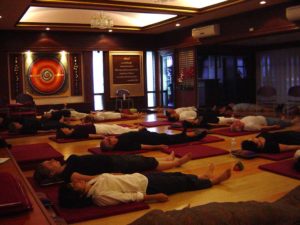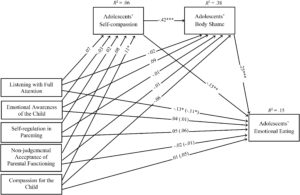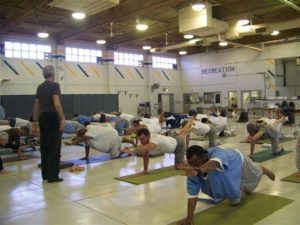Mindfully Politically Correct During the Holidays
By John M. de Castro, Ph.D.
“po·lit·i·cal cor·rect·ness
noun
- the avoidance, often considered as taken to extremes, of forms of expression or action that are perceived to exclude, marginalize, or insult groups of people who are socially disadvantaged or discriminated against.”
In the U.S. there are a large number of people who assert that there’s currently a war on Christmas. This has been brought about by a movement to use faith neutral terms for greetings and well wishes during the end of December season. So, rather than say “Merry Christmas” they say “Happy Holidays.” The accusation is that this is political correctness gone awry. It removes the meaning from Christmas and is an assault on religious freedom. In a broader sense, it’s an accusation that political correctness in general is distasteful and demeans the culture and damages freedom of speech and religion.
There is a meme used on the internet and on bumper stickers that “Jesus, is the reason for the season. But that is only true for Christians. In fact, the season’s celebration has a long history. The end of December is the time of the winter solstice, the shortest day of the year, transitioning from shortening days to lengthening days. Since the beginning of recorded history, the solstice has been a time of celebration and merriment. For most of that time it was an extremely popular pagan celebration. The Christians tried to suppress it but, because of its popularity, were unsuccessful. So, instead they coopted it, turning it into a celebration of Jesus’ birth. There are no records of the actual date of Jesus’ birth, so any day could be chosen, and the time of the pagan solstice celebration was perfect. The so-called Christmas celebration actually maintains many remnants of the pagan celebration, including the tree, wreaths, mistletoe, holly, the name yule, the yule log, and even the use of the word “jolly”.
So, what is the correct designation for the time of year. That depends upon your perspective. If you’re Christian, then Christmas is the appropriate term; if you’re pagan, then Yule is it; if you’re Jewish then it’s Hanukkah; if you’re Buddhist then it’s Bodhi Day; if your Muslim it’s Id al-Adha (the Day of Sacrifice); if you’re Native American it’s Soyal; if you’re Japanese it’s Omisoka; and if you’re African it’s Kwanza. So, what is the correct term. Well, obviously, it depends on who you’re talking to. But in every case late December is a time for a holiday. So, wishing someone “Happy Holidays” will almost inevitably get it right no matter who you’re addressing. But, if you know the individual’s holiday of choice then the specific wish is appropriate. If they’re Christian then a “Merry Christmas” is called; if Jewish “Happy Hanukkah”; etc.
Applying mindfulness to this discussion we can look to the fundamental teaching of the Buddha of “Right Action.” He taught that an action, of itself, is neither good nor bad, rather that the rightness or the wrongness of an action is determined by its effects. If the action produces greater harmony, happiness, wisdom, and well-being, and relieves suffering then it is considered good. If, on the other hand, it produces disharmony, unhappiness, confusion, unhealthfulness, and creates suffering then it’s considered bad. That is the sole test, the effects of the action.
We can put this test to being politically correct. If we carefully and mindfully observe the effects of saying “Happy Holidays” rather than “Merry Christmas” or “Happy Hanukkah,” etc. we’ll likely observe a positive response from most people. But, there will be a few people who will be upset and show a negative response. So, for the most part greeting someone with “Happy Holidays” will increase harmony and happiness for the largest proportion of people. But, we can do better if we apply mindfulness to this situation and discern the nature of the individual before making the statement. This requires deep listening; a skill that is generally weak. In a conversation, most people are not really paying close attention to what the other people are saying. Rather, they are thinking about what they will say next and listening for a point where they can jump in and say it. But to discern the nature of the individual, it is necessary that they be listened deeply with full attention.
If mindfulness and deep listening reveals that the individual is Christian or Jewish, etc., then a statement of “Merry Christmas” or “Happy Hanukkah,” etc. would be good and increase harmony and happiness. It doesn’t demean your religious preference by recognizing the holiday celebrated by the other. It simply extends a wish for them to enjoy the holiday they celebrate. It would be bad to be stubborn and mindlessly stick to political correctness when it is clear that this would not be appropriate for the individual being greeted. It’s not always easy to correctly judge the individual and lacking a clear discernment it would be best to simply use “Happy Holidays.” In fact, not knowing who will be reading this essay, I’d be best advised to only use “Happy Holidays.” Keep in mind that perfection is not necessary, only that “Right Effort” is applied and the individual tries to do the best they can.
This argument applies also to political correctness in general. It requires mindfulness. It requires non-judgmental awareness of the circumstances, exactly who is present, and what are their characteristics. In fact, we do this all the time in social interactions. As a simple example, we discern the gender of the person in order to use the appropriate pronouns in conversation. But the sensitivity of some people to political correctness requires greater sensitivity and discernment than usual.
It needs to be kept in mind that conversations are not contests, with winners and losers. The goal is not to convince the other of your point of view, dominate the other, or win the discussion. There isn’t a war on anything. The mindful perspective is that the ultimate purpose is to increase harmony, happiness, wisdom, and well-being, and relieve suffering. Let this simple test guide the conversation, mindfully pay attention looking at the effects of the language being used, and in a very small way make the world a better place.
Happy Holidays!
“I had to live through controversies like the notion that I was trying to kill Christmas. Well, where’d that come from? Well, I bet he said happy holidays instead of merry Christmas. So, that must be evidence of him either not being a Christian or not caring about Christmas. . . . my advice to all of us as citizens is to be able to distinguish between being courteous and being thoughtful and thinking about how words affect other people and not demonizing others versus having legitimate political debates and disagreements.” – Barak Obama
CMCS – Center for Mindfulness and Contemplative Studies
This and other Contemplative Studies posts are a also available on Google+ https://plus.google.com/106784388191201299496/posts









